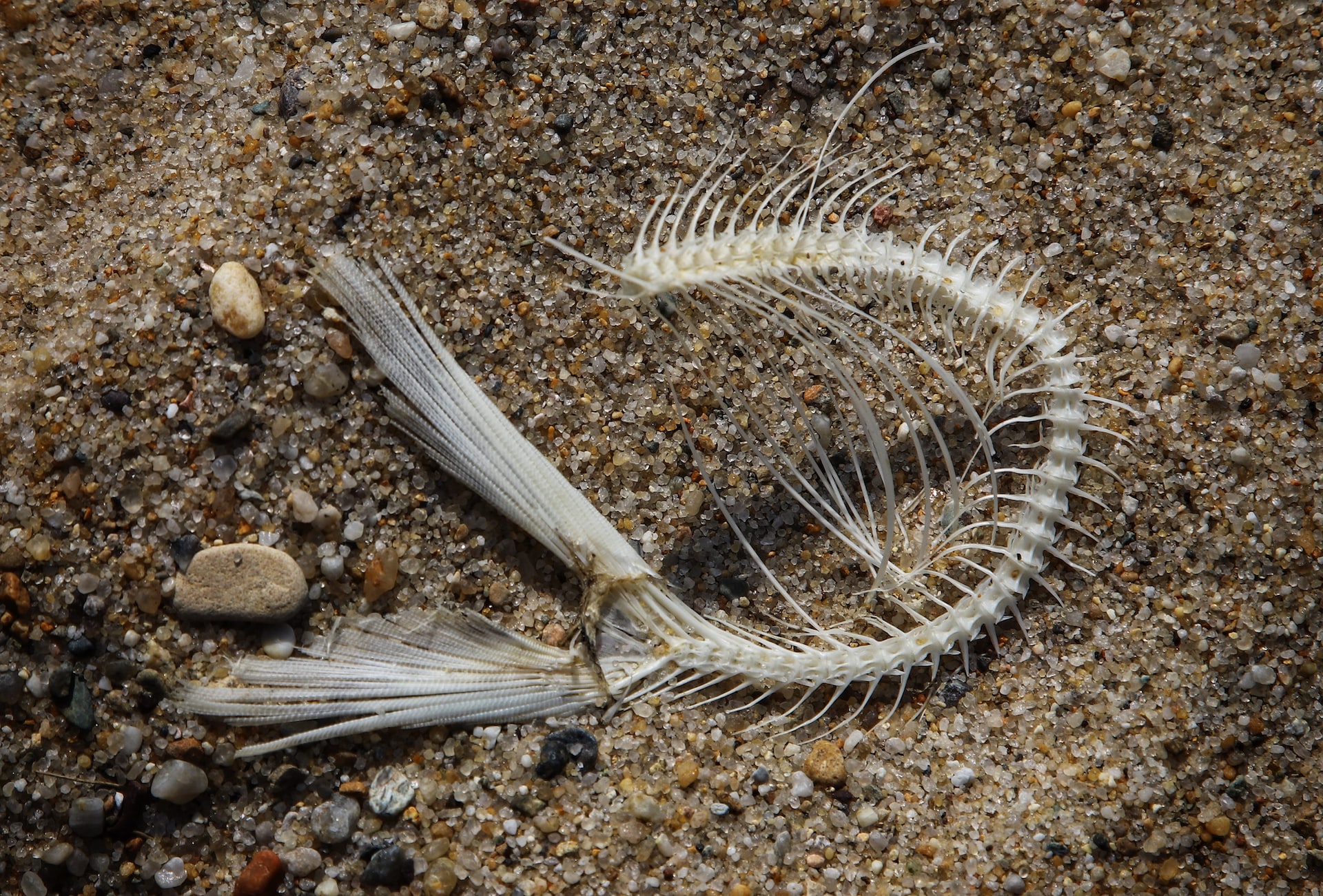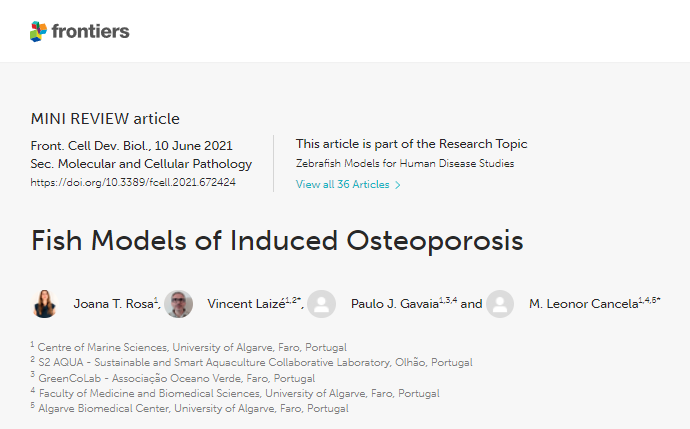

TITLE
Fish Models of Induced Osteoporosis
JOURNAL
Frontiers in Cell and Developmental Biology
AUTHORS
Joana T. Rosa, Vincent Laizé, Paulo J. Gavaia and M. Leonor Cancela
ABSTRACT
Osteopenia and osteoporosis are bone disorders characterized by reduced bone mineral density (BMD), altered bone microarchitecture and increased bone fragility. Because of global aging, their incidence is rapidly increasing worldwide and novel treatments that would be more efficient at preventing disease progression and at reducing the risk of bone fractures are needed. Preclinical studies are today a major bottleneck to the collection of new data and the discovery of new drugs, since they are commonly based on rodent in vivo systems that are time consuming and expensive, or in vitro systems that do not exactly recapitulate the complexity of low BMD disorders. In this regard, teleost fish, in particular zebrafish and medaka, have recently emerged as suitable alternatives to study bone formation and mineralization and to model human bone disorders. In addition to the many technical advantages that allow faster and larger studies, the availability of several fish models that efficiently mimic human osteopenia and osteoporosis phenotypes has stimulated the interest of the academia and industry toward a better understanding of the mechanisms of pathogenesis but also toward the discovery of new bone anabolic or antiresorptive compounds. This mini review recapitulates the in vivo teleost fish systems available to study low BMD disorders and highlights their applications and the recent advances in the field.



